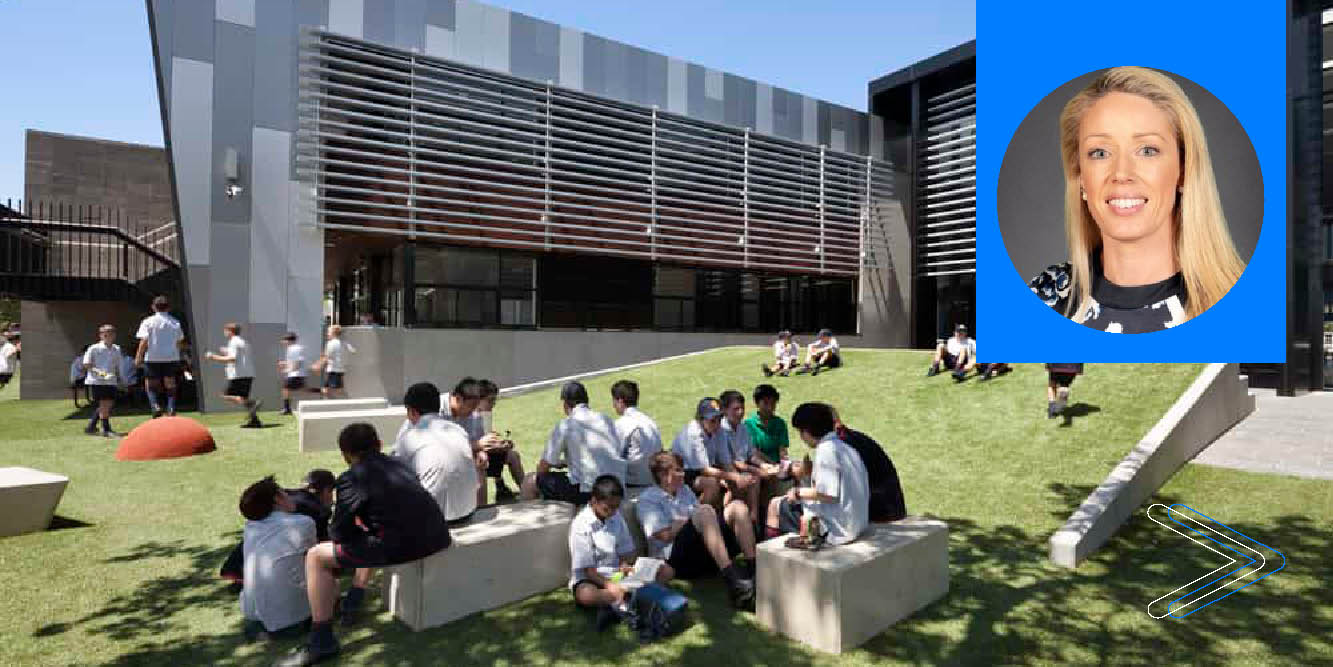
Getting runs on the board
Delivered a professional-grade scoreboard using the schools’ existing Vivi technology and avoiding hundreds of thousands of dollars worth of expenditure.
Room for innovation
Solved the need for social distancing at exam time using Vivi’s combined rooms feature to allow a single laptop to run simultaneous exams in multiple rooms.

“If you take the time to understand how it works,
you can fix almost anything.”
Sandra Maher, Director of ICT, Brighton Grammar School
Background
Sandra is the Director of ICT at Brighton Grammar School— a leading Anglican boys’ Kindergarten-to-Year-12 private school—in Melbourne’s southeast. She manages all IT facets at the school, from networks and cybersecurity to audio-visual and telecommunications.
The pace of technological change means the field Sandra studied some twenty-five years ago is now vastly different. Many of the challenges she faces each day were not taught at university because they didn’t exist. As a result, the most valuable thing she has learned is how to problem solve. Her view is that you can fix or improve anything if you take the time to understand how it works.
As someone who worked for a number of years at a Big Four accountancy firm, Sandra sees similarities between the two environments. Every large-scale organization needs every facet of IT, and it’s the same for the school. The one big difference is the resources available. Where she was once surrounded by 300 IT staff, her team now numbers just four. As you might expect, the role is extremely hands-on, but that’s what makes it so rewarding.
Sandra has a real passion for IT and loves the fast pace and variety in her role. One day she might be working on the school’s disaster recovery and redundancy; the next, she’s helping a student locate a missing laptop using the wi-fi network. The latter sounds like a relatively simple task, but on a 9-hectare campus with over 34 buildings, being able to pinpoint devices—and people—is quite an achievement.
Getting runs on the board
When the school was preparing to invest in a new scoreboard, the sports department approached Sandra with an impressive vision. They wanted to veer away from traditional scoreboards—which are generally square, have limited display capability, and run on clunky dedicated software—and raise the bar significantly.
To demonstrate their vision, the sports department took Sandra to see a training session at North Melbourne Football Club—one of Victoria’s professional AFL clubs. There, she visited a dedicated AV room run by three technicians with five Macbook Pros and no end of cabling. It was indeed impressive. During the session, the coach would ask technicians to play some training or game-day footage, show demonstrations of the warm-ups with timers ticking down, and even record the drills to show how well the players were doing.
The benefit such an approach would bring to the school’s sports teams was obvious. As a tool, it would also benefit the school’s development office, which would be able to display digital signage when the oval was not in use. Sandra was keen to find a solution, but replicating what she had seen at North Melbourne FC would require an investment of several hundred thousand dollars.
After a few sleepless nights wrestling with dollars and deliverables, Sandra realized the requirement was actually more straightforward than it sounded. The sports department needed the ability to present to a screen from a laptop; in effect, they wanted a big, outdoor classroom.
Sandra’s solution was to have a custom-made billboard, with high-quality graphics and a 15:9 ratio—the same as a display screen—installed and Vivi enabled. Because Vivi was familiar to all, no additional training would be required. All that remained was to boost the wi-fi to ensure any staff on the football oval could gain access to the school’s secure network and, therefore, Vivi.
As well as revolutionizing the school’s approach to coaching sport, the scoreboard allows the development office to advertise school functions and recognize events in the wider community. Recently, the school displayed messages celebrating old Brighton Grammarian, Dylan Alcott’s seventh consecutive Australian Open win.
Room for innovation
The world changed in 2020. COVID-19 brought with it new requirements like social distancing and a lockdown—in Melbourne, at least—that led to two full terms of homeschooling. Fortunately, students returned to school just in time for their final exams, but new social-distancing mandates meant having all students seated in one large area was no longer possible.
For the exams to meet the new guidelines, they needed to take place in multiple rooms. The challenge was how to make that work. The exams required a degree of coordination to ensure precisely the same instructions and information —including the all-important count-down clock showing students how much time was left.
In Vivi, Sandra found a simple solution. The combined rooms feature leant itself perfectly to the task. Through Vivi Central, she could group the displays in any rooms and run them all from a single laptop. Come the morning of each exam, they checked the timetable to see which rooms were being used and then grouped them. At one stage, the school was operating six separate exam rooms simultaneously.



